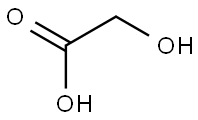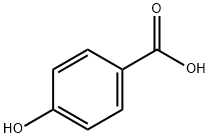10-Hydroxy-2-decenoic acid
Synonym(s):(E)-10-Hydroxy-2-decenoic acid;10-HAD;NSC 87516;Royal jelly acid;Trans-10-hydroxy-2-decenoic acid
- CAS NO.:14113-05-4
- Empirical Formula: C10H18O3
- Molecular Weight: 186.25
- MDL number: MFCD00204506
- EINECS: 808-119-7
- SAFETY DATA SHEET (SDS)
- Update Date: 2024-11-19 23:02:33

What is 10-Hydroxy-2-decenoic acid ?
Description
10-
The Uses of 10-Hydroxy-2-decenoic acid
10-Hydroxy-2-decenoic acid has antiseptic, anti-inflammatory, anti-obesity, anti-aging, preventing bone loss and anti-tumour pharmacological effects, with potential therapeutic effects for postmenopausal osteoporosis, as well as benefiting the human gastrointestinal tract[1-3].
What are the applications of Application
Royal Jelly acid is an inhibitor of VEGF-induced angiogenesis, cell migration and proliferation
Definition
ChEBI: (E)-10-hydroxydec-2-enoic acid is an omega-hydroxy amino acid that is 2-decenoic acid in which one of the hydrogens attached to the terminal carbon is replaced by a hydroxy group and in which the C=C double bond has E configuration. It is a component of royal jelly. It has a role as an animal metabolite and a geroprotector. It is an alpha,beta-unsaturated monocarboxylic acid, a straight-chain fatty acid, a hydroxy monounsaturated fatty acid and an omega-hydroxy-medium-chain fatty acid.
Biological Activity
10-Hydroxy-2-decenoic acid is an orally available royal jelly component that potently inhibits osteoclastogenesis. It binds to free fatty acid receptor 4 (FFAR4) on osteoclasts which inhibits RANKL (receptor activator of nuclear factor-κB (NF-κB) ligand), thereby attenuating the induction of nuclear factor of activated T cells (NFAT) c1. 10-Hydroxy-2-decenoic acid inhibits bone resorption in ovariectomized mice.
The production of pro-inflammatory cytokines, Interleukin (IL)-8, IL-1β and tumor necrosis factor-alpha (TNF-α) in WiDr cells was modulated by 10-HDA. IL-8 were dramatically declined by 10-HDA at 3 mM, while IL-1β and TNF-α were significantly decreased. 10-HDA increased IL-1ra in a dose manner. NF-κB pathway is primarily in response to prototypical pro-inflammatory cytokines, and NF-κB was reduced after 10-HDA treatment. 10-HDA acted as potent bactericide against animal- or human-specific pathogens, including Staphylococcus aureus, Streptococcus alactolyticus, Staphylococcus intermedius B, Staphylococcus xylosus, Salmonella cholearasuis, Vibro parahaemolyticus and Escherichia coli (hemolytic)[1].
References
[1] YUAN-CHANG YANG. 10-hydroxy-2-decenoic acid of royal jelly exhibits bactericide and anti-inflammatory activity in human colon cancer cells.[J]. BMC Complementary and Alternative Medicine, 2018: 202. DOI:10.1186/s12906-018-2267-9.
[2] YOKO HONDA. 10-Hydroxy-2-decenoic Acid, the Major Lipid Component of Royal Jelly, Extends the Lifespan of Caenorhabditis elegans through Dietary Restriction and Target of Rapamycin Signaling.[J]. Journal of Aging Research, 2015, 2015: 425261. DOI:10.1155/2015/425261.
[3] YOSUKE TSUCHIYA. The key royal jelly component 10-hydroxy-2-decenoic acid protects against bone loss by inhibiting NF-κB signaling downstream of FFAR4.[J]. The Journal of Biological Chemistry, 2020, 295 34: 12224-12232. DOI:10.1074/jbc.RA120.013821.
Properties of 10-Hydroxy-2-decenoic acid
| Melting point: | 64.0 to 68.0 °C |
| Boiling point: | 339.2±15.0 °C(Predicted) |
| Density | 1.038±0.06 g/cm3(Predicted) |
| storage temp. | under inert gas (nitrogen or Argon) at 2-8°C |
| solubility | DMF: 30 mg/ml; DMSO: 30 mg/ml; Ethanol: 20 mg/ml |
| form | powder to crystal |
| pka | 4.78±0.10(Predicted) |
| color | White to Almost white |
| CAS DataBase Reference | 14113-05-4(CAS DataBase Reference) |
Safety information for 10-Hydroxy-2-decenoic acid
| Signal word | Warning |
| Pictogram(s) |
 Exclamation Mark Irritant GHS07 |
| GHS Hazard Statements |
H315:Skin corrosion/irritation H319:Serious eye damage/eye irritation |
| Precautionary Statement Codes |
P280:Wear protective gloves/protective clothing/eye protection/face protection. P302+P352:IF ON SKIN: wash with plenty of soap and water. P305+P351+P338:IF IN EYES: Rinse cautiously with water for several minutes. Remove contact lenses, if present and easy to do. Continuerinsing. P332+P313:IF SKIN irritation occurs: Get medical advice/attention. P337+P313:IF eye irritation persists: Get medical advice/attention. |
Computed Descriptors for 10-Hydroxy-2-decenoic acid
New Products
4-AMINO-TETRAHYDRO-PYRAN-4-CARBOXYLIC ACID HCL 4-(Dimethylamino)tetrahydro-2H-pyran-4-carbonitrile 4-Aminotetrahydropyran-4-carbonitrile Hydrochloride (R)-3-Aminobutanenitrile Hydrochloride 3-((Dimethylamino)methyl)-5-methylhexan-2-one oxalate 1,4-Dioxa-8-azaspiro[4.5]decane 5-Bromo-2-nitropyridine Nimesulide BP Aceclofenac IP/BP/EP Diclofenac Sodium IP/BP/EP/USP Mefenamic Acid IP/BP/EP/USP Ornidazole IP Diclofenac Potassium THOMAIND PAPER PH 2.0 TO 4.5 1 BOX BUFFER CAPSULE PH 9.2 - 10 CAP SODIUM CHLORIDE 0.1N CVS ALLOXAN MONOHYDRATE 98% PLATINUM 0.5% ON 3 MM ALUMINA PELLETS (TYPE 73) LITHIUM AAS SOLUTION 2-Bromo-1-(bromomethyl)-3-chloro-5-nitrobenzene 2-Bromo-3-nitroaniline N-(3-Hydroxypropyl)-N-methylacetamide 3-Bromo-6-chloropyridazine 4-ethyl-3-nitrobenzoic acidRelated products of tetrahydrofuran








You may like
-
 trans-10-Hydroxy-2-decenoic Acid CAS 14113-05-4View Details
trans-10-Hydroxy-2-decenoic Acid CAS 14113-05-4View Details
14113-05-4 -
 10-Hydroxy-trans-2-decenoic acid CAS 14113-05-4View Details
10-Hydroxy-trans-2-decenoic acid CAS 14113-05-4View Details
14113-05-4 -
 1823368-42-8 98%View Details
1823368-42-8 98%View Details
1823368-42-8 -
 2-(3-(tert-butyl)phenoxy)-2-methylpropanoic acid 1307449-08-6 98%View Details
2-(3-(tert-butyl)phenoxy)-2-methylpropanoic acid 1307449-08-6 98%View Details
1307449-08-6 -
 Ethyl 3-(furan-2-yl)-3-hydroxypropanoate 25408-95-1 98%View Details
Ethyl 3-(furan-2-yl)-3-hydroxypropanoate 25408-95-1 98%View Details
25408-95-1 -
 2-Chloro-5-fluoro-1-methoxy-3-methylbenzene 98%View Details
2-Chloro-5-fluoro-1-methoxy-3-methylbenzene 98%View Details
1805639-70-6 -
 1784294-80-9 98%View Details
1784294-80-9 98%View Details
1784294-80-9 -
 Lithium ClavulanateView Details
Lithium ClavulanateView Details
61177-44-4